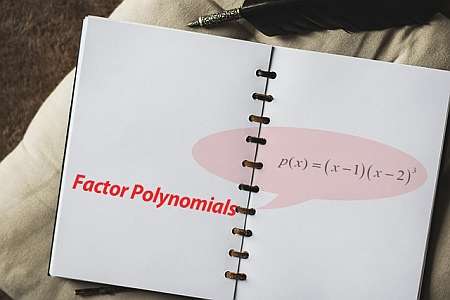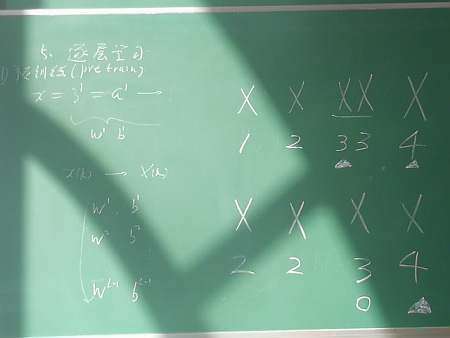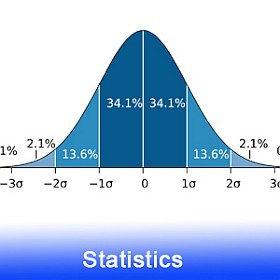Factor Calculator
Instructions: Use factor calculator to work with factoring of an expression that you provide, showing all the relevant steps. Please type the expression you want to factor in the form below.
About this Factor Calculator
This factor calculator will allow you take an expression you provide and expressed in terms of factors, if possible. We say if it is possible, because not always you will be able to factor any given expression. For example, the expression x^2 + 1 cannot be factored in the real field (though it could be done in the complex field).
Once you provide a valid expression that you need to work with, the next step is just to simple click on "Calculate" in order to get all the steps shown, in case a factorization is possible.
Factoring expression can be complicated and can frustrating at times because it cannot always be achieved. Indeed, we can only successfully factor polynomials with some level of generality, though it is not an easy task often, and we cannot deal with just any polynomial (especially those with higher degrees).

What is the meaning of "factoring an expression"?
Factoring an expression means, put simply, to write the expression as the product of factors, and furthermore, as the product of factors that cannot be further factored. For example you may have an expression like
\[\displaystyle x^2(x^4-1) \]and then you may say that is in factored form, because the expression is the "multiplication of factors". Yes, but not quite. The term \(x^4 - 1\) can still be factored using the product of sum and difference rule as \(x^4 - 1 = (x^2 - 1)(x^2 + 1)\), so then our original expression is
\[\displaystyle x^2(x^4-1) = x^2(x^2-1)(x^2+1) \]Is this in factored form? Well, it is a product of factors, but is it the case that all factors cannot be further simplified? Nope, you see that using again the product of sum and difference rule we have \(x^2 - 1 = (x - 1)(x + 1)\), so then we arrive to
\[\displaystyle x^2(x^4-1) = x^2(x^2-1)(x^2+1) = x^2(x-1)(x+1)(x^2+1) \]and now we finally have the factored form of the original expression.
How to factor an expression
- Step 1: Identify clearly the expression you are working with. If there is a clear simplification that can be done, do it.
- Step 2: You need to identify the structure of the expression. Is it a polynomial? If so, find the root of the polynomials using the different tools available. If xo is a root of the polynomial, then by the Fundamental Theorem of Algebra we have that x - xo is a factor of the expression
- Step 3: If it is not a polynomial, is the expression a product of smaller expressions? If so, analyze each of those smaller expressions separately.
- Step 4: If not, well, there is no road map, you will need to try to exploit any known equalities to try to put it into factored form.
As you can see, Step 4 appears a bit vague, but that reflects the truth about factoring terms, you just cannot really say a general path, cause it largely depends on the terms found in the expression, its structure and specific algebraic rules.
How does this factor calculator work?
This factoring calculator with steps will examine the structure you provide, and look for known patterns to attempt to conduct a factoring process, which isn't always successful.
\[\displaystyle \frac{a}{b} \times \frac{c}{d} = \displaystyle \frac{ac}{bd} \]
How are factoring and simplifying related
Often times, factoring and simplifying go in the same direction and end up doing the same thing. When you want to simplify an expression, you often group alike terms together and then trying to perhaps use a reverse distributive process and end up with a factored term.
When trying to factor an expression, you simplify and look for factors, and usually lead to the same as what you would get when simplifying. Which raises a question: if you had and expression like
\[\displaystyle x^2 + 4x + 3 \]You could argue that the above expression is full simplified. Why, because there is no alike term that could be further simplified. But then, if I ask you to factor the expression, you would need to do
\[\displaystyle x^2 + 4x + 3 = (x+1)(x+3)\]because you cannot argue that is fully factored, but yet you can say it is fully simplified. Subtle difference, huh? Well, this tells us that simplifying shares lots of elements with factoring, but essentially they are not the same.
Why would care about factoring?
Very simply, because factoring is the main tool we have available for solving an equation. The macro level algorithm for solving equations is "put everything on one side of the equation and try to factor that". Why? Because when you have a product of things, it is enough that any of the factors is zero to have the expression to be zero, and hence, be a solution of the equation.
Solving equations is indeed at the center of all Algebra things, and factoring is at the center of solving equation. So you can tell how important it is.

Example: Factor completely the following
Calculate the following: \(x^2(x^3+1)\)
Solution:Although we have a product of factors, we cannot say the expression is factored completely. Indeed, the second term has a further factor decomposition:
\[x^3+1 = (x+1)(x^2-x+1)\]from which we simply get that
\[x^2(x^3+1) = x^2 (x+1)(x^2-x+1)\]which concludes the calculation of the factoring. Now, how could this help to solve the equation associated to the expression: \(x^2(x^3+1) = 0\)? Well, now that you have the left hand side of the equation completely factored, we see that we need to solve
\[x^2(x^3+1) = x^2 (x+1)(x^2-x+1) = 0\]so we need to solve:
\[x^2 (x+1)(x^2-x+1) = 0\]Since the side on the left is the product of factors, the solutions to the equation come from setting each factor equal to zero. The solutions of the equation are \(x = 0\), which comes from solving \(x^2 = 0\), \(x = -1\), which comes from solving \(x+1 = 0\) and \(x = \frac{-1 \pm i\sqrt 3}{2}\), which comes from solving \(x^2-x+1 = 0\)
More Algebra calculators
Factoring expression is the one tool we mostly use to solving an equation, there is not much else. In many cases, we can only factor polynomials, but there are some exceptional circumstances in which certain rules and identities can be used to factor trigonometric expressions, exponential expressions and logarithmic expressions, just to mention a few.
For the specific case of polynomials, there are interesting methods based on the rational zero theorem and polynomial division and polynomial residuals



